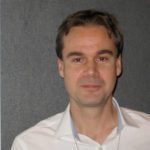Link to Pubmed [PMID] – 30086830
Biophys. J. 2018 Jul;
In some fungi, a premeiotic process known as repeat-induced point mutation (RIP) can accurately identify and mutate nearly all gene-sized DNA repeats present in the haploid germline nuclei. Studies in Neurospora crassa have suggested that RIP detects sequence homology directly between intact DNA double helices, without strand separation and without the participation of RecA-like proteins. Those studies used the aggregated number of RIP mutations as a simple quantitative measure of RIP activity. Additional structural information about homologous DNA-DNA pairing during RIP can be extracted by analyzing spatial distributions of RIP mutations converted into profiles of partitioned RIP propensity (PRP). Further analysis shows that PRP is strongly affected by the topological configuration and the relative positioning of the participating DNA segments. Most notably, pairs of closely positioned repeats produce very distinct PRP profiles depending on whether these repeats are present in the direct or the inverted orientation. Such an effect can be attributed to a topology-dependent redistribution of the supercoiling stress created by the predicted limited untwisting of the DNA segments during pairing. This and other results raise a possibility that such pairing-induced fluctuations in DNA supercoiling can modulate the overall structure and properties of repetitive DNA. Such effects can be particularly strong in the context of long tandem-repeat arrays that are typically present in the pericentromeric and centromeric regions of chromosomes in many species of plants, fungi, and animals, including humans.

